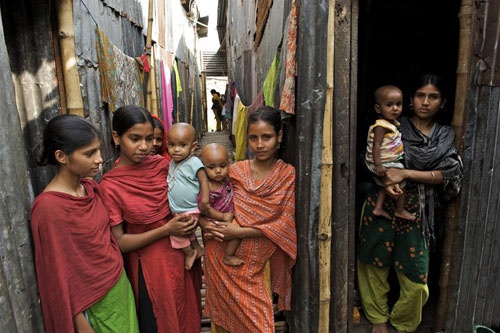
Billion children are now estimated to live in urban areas, according to UNICEF, which is releasing the Report entitled “The State of the World's Children 2012” February 28, 2012. Not all children living in urban areas are benefiting from the economic expansion in cities, UNICEF said in a statement issued ahead of the report's release. (See Statement & Link – UNICEF -
www.unicef.org/media/media_61795.html).
Struggles Urban Children Face Upholding Rights to Survival, Health, Nutrition, Education & Protection:
“In this increasingly urban world, the absence of a sustained focus on child rights means that some children are being left behind, Although cities and towns generally offer better options for schooling, medical care and recreation, those already disadvantaged – including children living in slums and informal settlements, migrant children, or children living or working on the streets – are unlikely to enjoy the benefits,” according to the Report.
One of the report's editors, Abid Aslam, said it was disturbing that so many children worldwide were being born into “extremely harsh” urban conditions, especially in slums, where homelessness, exploitative labour and gang violence are common. “They don't know often from one week to the next where they're going to live, much less whether they're going to be able to go to school, or whether they're going to have clean, piped water.”
By Ambassador Muhamed Sacirbey – Follow @MuhamedSacirbey
Facebook = Become a Fan at “Diplomatically Incorrect”
Twitter – Follow us at DiplomaticallyX
Time to focus on urban childhoods, UNICEF says in flagship report
More than half of the world’s 7 billion people now live in urban areas. What does this mean for children? UNICEF has dedicated the 2012 edition of its flagship report, The State of the World’s Children, to the situation of children growing up in urban settings. Cities are known to generate economic growth – but, as the report reveals, not all children are benefiting from urban expansion. In this increasingly urban world, the absence of a sustained focus on child rights means that some children are being left behind.
The State of the World’s Children 2012: Children in an Urban World finds that denials of children’s rights to survival, health, nutrition, education and protection are widespread in urban environments. Although cities and towns generally offer better options for schooling, medical care and recreation, those already disadvantaged – including children living in slums and informal settlements, migrant children, or children living or working on the streets – are unlikely to enjoy the benefits.
Urban inequity is common to all countries, although its specific forms and patterns vary. It affects the life chances of hundreds of millions of children. The 2012 edition of The State of the World’s Children sheds light on the scale of the issue and suggests ways to ensure that an urban childhood is also a safe, healthy, participatory and fulfilling one. The report argues that a concerted effort to place children’s rights at the centre of urban decision-making is the only way to narrow the gaps and build a more equitable and prosperous urban future.
The State of the World’s Children 2012: Children in an Urban World will be launched on 28 February 2012. The report, executive summary and additional multimedia material will be available.
For further information or to set up interviews, please contact:
Sarah Crowe, Senior Media Adviser, UNICEF New York,
Mobile: +1 646 209 1590,
scrowe@unicef.org
Maurizio Giuliano, Chief of Communication, UNICEF Mexico,
Mobile: 52 155 385 82559,
mgiuliano@unicef.org
Peter Smerdon, UNICEF New York,
Mobile: +1 917 213 5188,
psmerdon@unicef.org

